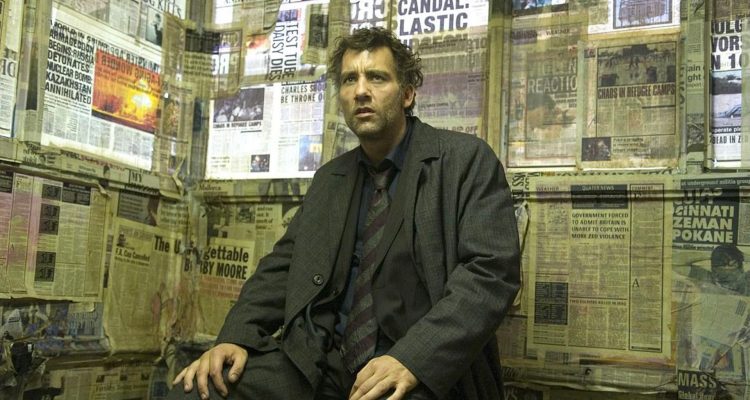It says something about current post-Brexit, post-Donald Trump-election era that we’re living that, 10 years on from first hitting cinemas, Alfonso Cuarón‘s “Children Of Men” has gone from fanciful apocalyptic vision to having serious contemporary resonance. Set in 2027 (just 10 years away, everybody), the film tracks a man who agrees to bring safe passage to woman whose fertility, in a time when women are unable to conceive, may bear the hope for the future of the human race — certainly one with a little more promise than the bombed-out London Cuarón presents in his movie.
READ MORE: The 50 Best Sci-Fi Films Of The 21st Century So Far
To celebrate the 10th anniversary of the film, Vulture put together a lengthy must-read piece about the making of the movie, and one of the more fascinating revelations is that street artist Banksy was approached to work on the movie. It didn’t quite pan out, but the anecdote is a pretty good one:
It got the green light in 2005, and Cuarón mapped out a plan of aesthetic attack. He recruited his longtime friend and frequent partner Emmanuel “Chivo” Lubezki to be his cinematographer. Together, they hit on the idea of loading up the background with information — graffiti, placards, newscasts — and thus limiting the kind of expository dialogue that often plagues dystopian stories. Cuarón recalls Lubezki declaring, “We cannot allow one single frame of this film to go without a comment on the state of things.”
They also came close to having another artistic collaborator: the infamously anonymous street artist Banksy. “Banksy was not yet the famous Banksy that he is now, and I dug him,” Cuarón says. He wanted to have the graffiti artist work on the film in some way, so he tracked down Banksy’s manager and arranged a meeting at a coffee shop. Cuarón sat across from the manager, who started grilling the director on his ideological stances. Banksy was nowhere to be seen. The meeting ended without resolution. Only after it was over did a person nearby excitedly tell Cuarón that a silent figure had walked in during the meeting and placed himself behind Cuarón the whole time, hidden from view, then left before Cuarón could turn around. Cuaron suspects it was Banksy — who didn’t sign on for the film but reportedly gave permission through his manager to use one of his works, a stencil of two cops smooching, in the background of one of the shots.
Nifty story, and you can check out the Banksy-approved stencil in the scene below, starting at the one-minute mark.

